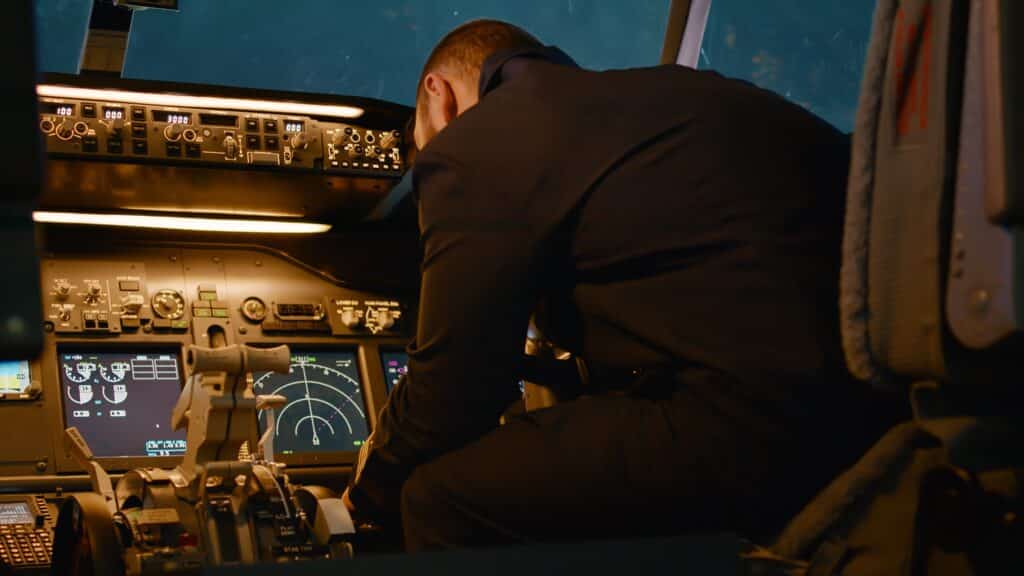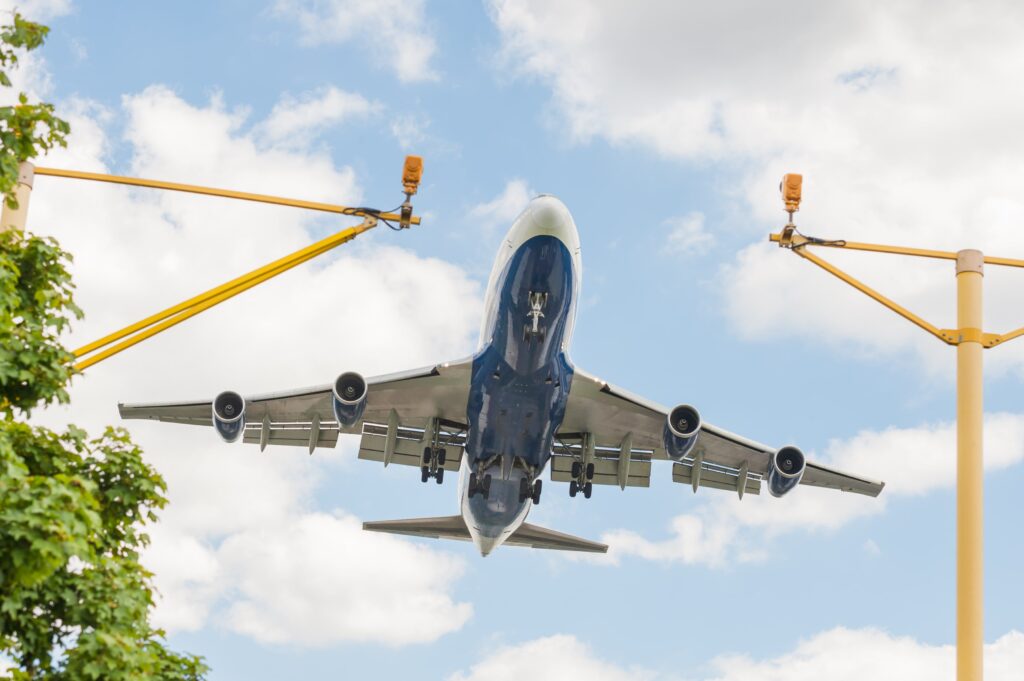
Safety remains the paramount concern in the complex and dynamic realm of aviation. This article delves into the critical concept of Threat and Error Management (TEM), a strategic framework designed to enhance safety in the skies.
Threat and error management (TEM) is an overarching safety management approach that assumes pilots naturally make mistakes and encounter risky situations during flight operations. Rather than trying to avoid these threats and errors, its primary focus is teaching pilots to manage them so they do not impair safety.
The TEM model aims to maintain operational safety by training pilots to detect and respond to likely damaging events (threats) and potential mistakes (errors).
Discover all our aviation-related topics.
Psychologists at the University of Texas Human Factors Research Project (UT) initially developed the TEM framework in 1994. However, they needed an evaluation method to identify threats and errors during flight operations and to supplement existing TEM data. So, a collaboration between the University of Texas and Delta Airlines developed a Line Audit Methodology – Line Operations Safety Audit (LOSA). It involves identifying and collecting safety-related information on crew performance, environmental conditions, and operational complexity by a highly trained observer using jump-seat observations on scheduled flights.
The observation forms were initially designed to evaluate Crew Resource Management (CRM) behaviour on the flight deck. Researchers later extended the process to include the management of errors and the types of errors observed. In 1996, Continental Airlines conducted the first full-scale TEM-based LOSA. Using the original CRM indicators (leadership, communication, and monitoring/cross-checking) and the extended concept of TEM, the researchers identified the most frequent threats.
Organisations use LOSA data to evaluate the effectiveness of their training programs and assess how crews implement trained procedures on day-to-day flights. The method provides a comprehensive picture of the most common errors and threats.

Safety training, including Threat and Error Management (TEM), is essential. This is because a crew’s non-technical knowledge can help manage errors more effectively than their experience with operational procedures.
Several fatal accidents have occurred due to decision-making errors, such as continuing a visual approach in deteriorating weather conditions. Such errors could have been prevented by thorough pre-flight planning. Understanding why these errors occur after an accident is crucial. However, it is equally essential to avoid these threats and errors from developing into unfavourable outcomes, such as the one mentioned.
People can manage only what they are aware of. Actively detecting and recognising emerging threats and errors supports our ability to maintain situational awareness.
The TEM framework comprises three fundamental components: threats, errors, and undesired aircraft states. According to the framework, threats and errors are a routine part of flight operations, which aviation professionals must manage.

Threats refer to any unexpected occurrences or errors that happen beyond the control of the flight crew. During normal flight operations, pilots must manage various challenges such as unfavourable weather conditions, airports in mountainous regions, busy airspace, technical issues with the aircraft, errors made by air traffic controllers, etc. The Threat and Error Management (TEM) model considers these challenges as threats as they all have the potential to pose a risk to the safety of the flight.
Threats can be internal or external:
Internal threats are related to the individuals. Examples are:
External threat relates to the context of the operation and can, therefore, be different depending on the situation. Examples are:
Threats can also be categorised into anticipated, unanticipated and latent threats.
Anticipated threats are known to the flight crew. For example, the flight crew can forecast the consequences of low visibility by briefing their response in advance or preparing a contingency plan.
Unanticipated threats occur unexpectedly, such as unforeseen turbulence or an in-flight engine fire that happens suddenly and without warning. In this case, flight crews must apply skills and knowledge acquired through training and operational experience.
Latent threats, however, may not be directly obvious or observable and need to be discovered through formal safety analysis. These may include sociopsychology and/or organisational factors such as culture, operational pressures and normalised behaviours.
Errors refer to actions or inactions taken by flight crew members that result in deviations from organisational and operational intentions or expectations. These errors can decrease safety margins and increase the likelihood of an undesirable event during flight or on the ground.
Errors can be classified as slips, lapses, or mistakes and are considered unintentional.
Slips are actions that do not go as planned or where we find ourselves doing something we never meant to do. For example, setting altitude instead of heading.
Lapses are memory failures or leaving out a step that we intend to carry out. For example, forgetting to check that the aircraft is sufficiently refuelled.
Mistakes occur when we carry out the actions as planned, but what we planned was not suitable for the situation. For example, taxiing too fast, attempting to turn down the wrong taxiway/runways, or using an incorrect de-icing procedure.
Whether an error affects safety depends on whether the flight crew detects and responds to it before it leads to an unsafe outcome.
The TEM model does not consider intentional non-compliance and proficiency as separate error categories to keep the framework simple.
Undesired aircraft states are a flight crew-induced aircraft position or speed deviations, misapplication of flight controls, or incorrect systems configurations, associated with a reduction in safety margins.
Threats and/or errors not detected and/or not managed correctly can lead to an ‘undesired state’. Undesired states are unintended situations resulting in reduced safety margins. They usually exist transiently, only for a limited time, until recovery of the state occurs or it evolves into an adverse outcome, such as an incident or accident.
Examples of undesired states:

As part of their regular duties, flight crews must take countermeasures to prevent threats, errors, and undesired aircraft states that may compromise the safety of flight operations. These measures mainly rely on flight crew actions. However, some measures are established using “hard” resources that are already part of the aviation system. Such measures are known as systemic countermeasures.
Examples of systemic-based countermeasures include:
Other countermeasures are more directly related to the human contribution to the safety of flight operations. These measures include personal strategies, tactics, and team-based countermeasures focusing on developing skills, knowledge, and attitudes through human performance training, such as Crew Resource Management (CRM) training. In addition, the TEM model includes three other main countermeasures that can be categorised as follows:
TEM is the overarching safety concept with multiple aviation applications, while CRM is exclusively a training intervention. Existing CRM programs have integrated the fundamental principles of TEM (Threats, Errors, and Undesired Aircraft States). By combining TEM concepts with CRM skills, flight crews can learn to use these skills in their daily operational environment.
CRM training provides flight crews the necessary skills and strategies for effective communication and teamwork. On the other hand, TEM offers a framework for applying these skills to identify and manage potential threats and errors in the operational environment. Together, these two concepts provide a comprehensive approach to managing the complex interplay of human performance and operational challenges in aviation.

Threat and error management is the most proactive approach to maintaining safety margins during flight operations. It helps prevent safety-compromising situations from arising in the first place. Flight crews play a vital role in threat management, and they are the last line of defence to keep threats from affecting flight operations.
Want to exercise the concepts of threat and error management?
Elevate your team’s threat and error management proficiency with our hands-on, dynamic STRATEGICS© group exercise. This transformative group experience will sharpen your teamwork, communication, and decision-making skills. Our exercise goes beyond theory and immerses you in a dynamic setting to develop your understanding of threat and error management and the tactics we can use to enhance it.
Explore our threat and error management exercise STRATEGICS© here.
Dive into our insightful and informative articles that will help you explore more and get ahead of the competition.
© 2024 NaviMinds – Designed by Aveo web&marketing